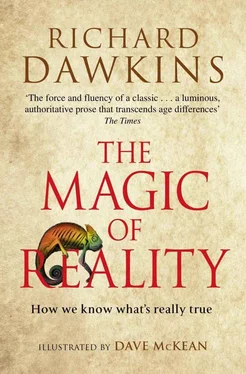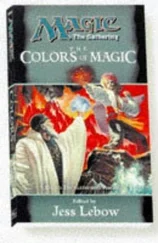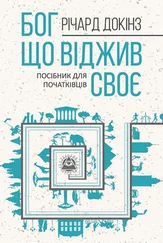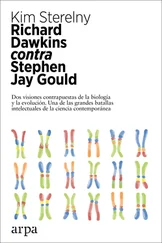We’re back to the same problem of striking a balance between attacking genuine enemies (cancer cells) and not attacking friends (our own normal cells): back to the problem of the leopard in the long grass again.
Let me end this chapter with a speculation. Is it possible that auto-immune diseases are a kind of byproduct of an evolutionary war, over many ancestral generations, against cancer? The immune system wins many battles against pre-cancerous cells, suppressing them before they have a chance to become fully malignant. My suggestion is that, in its constant vigilance against pre-cancerous cells, the immune system sometimes goes too far and attacks harmless tissues, attacks the body’s own cells – and we call this an auto-immune disease. Could it be that the explanation of auto-immune diseases is that they are evidence of evolution’s work-in-progress on an effective weapon against cancer?
What do you think?
12. WHAT IS A MIRACLE?

IN THE FIRST chapter of this book I talked about magic, and separated supernatural magic (casting a spell to turn a frog into a prince, or rubbing a lamp to conjure up a genie) from conjuring tricks (illusions, such as silk handkerchiefs turning into rabbits, or women being sawn in half). Nobody nowadays believes in fairytale magic. Everybody knows that pumpkins turn into coaches only in Cinderella . And we all know that rabbits come out of apparently empty hats only by trickery. But there are some supernatural tales that are still taken seriously, and the ‘events’ they recount are often called miracles. This chapter is about miracles – stories of super-natural happenings that many people believe, as opposed to fairy-tale spells, which nobody believes, and conjuring tricks, which look like magic but we know are faked.
Some of these tales are ghost stories, spooky urban legends or stories of uncanny coincidence – stories like, ‘I dreamed about a celebrity whom I hadn’t thought about for years, and the very next morning I heard that he’d died in the night.’ Many more come from the hundreds of religions around the world, and these in particular are often called miracles. To take just one example, there is a legend that, about 2,000 years ago, a wandering Jewish preacher called Jesus was at a wedding where they ran out of wine. So he called for some water and used miraculous powers to turn it into wine – very good wine, as the story goes on to tell us. People who would laugh at the idea that a pumpkin could turn into a coach, and who know perfectly well that silk handkerchiefs don’t really turn into rabbits, are quite happy to believe that a prophet turned water into wine or, as devotees of another religion would have it, flew to heaven on a winged horse.
Rumour, coincidence and snowballing stories
Usually when we hear a miracle story it’s not from an eye witness, but from somebody who heard about it from somebody else, who heard it from somebody else, who heard it from somebody else’s wife’s friend’s cousin… and any story, passed on by enough people, gets garbled. The original source of the story is often itself a rumour that began so long ago and has become so distorted in the retelling that it is almost impossible to guess what actual event – if any – started it off.
After the death of almost any famous person, hero or villain, stories that somebody has seen them alive start rushing around the globe. This was true of Elvis Presley, of Marilyn Monroe, even of Adolf Hitler. It’s hard to know why people enjoy passing on such rumours when they hear them, but the fact is that they do, and that is a big part of the reason why rumours spread.
Here’s a recent example of how such a rumour gets started. Soon after Michael Jackson died in 2009, an American television crew was given a guided tour of his famous mansion called Neverland. In one scene of the resulting film, people thought they saw his ghost at the end of a long corridor. The recording is very unconvincing – however, it was enough to start wild rumours flying around. Michael Jackson’s ghost is at large! Copycat sightings soon emerged. For example, there is a photograph that a man took of the polished surface of his car. To you and me, especially when we compare the ‘face’ with the other clouds on either side, what we are looking at is obviously the reflection of a cloud. But to the overheated imagination of the devoted fan it could only be the ghost of Michael Jackson, and the picture on YouTube has received more than 15 million hits!
Actually, there’s something interesting going on here, which is worth mentioning. Humans are social animals, the human brain is pre-programmed to see the faces of other humans even where there aren’t any. This is why people so often see faces in the random patterns made by clouds, or on slices of toast, or in damp patches on walls.
Spine-tingling ghost stories are fun to tell, especially if they are really scary, and even more so if you claim that they are true. When I was eight, my family lived briefly in a house called Cuckoos, about 400 years old, with wonky black Tudor beams. Not surprisingly, the house had a legend about a long-dead priest hidden in a secret passage. There was a story that you could hear his footsteps on the stairs, but with the twist that you could hear one step too many – spookily explained by the fact that the staircase was said to have had an extra step in the sixteenth century! I remember the pleasure I took in passing the story on to my schoolfriends. It never occurred to me to ask how good the evidence was. It was enough that the house was old, and my friends were impressed.
People get a thrill from passing on ghost stories. The same applies to miracle stories. If a rumour of a miracle gets written down in a book, the rumour becomes hard to challenge, especially if the book is ancient. If a rumour is old enough, it starts to be called a ‘tradition’ instead, and then people believe it all the more. This is rather odd, because you might think they would realize that older rumours have had more time to get distorted than younger rumours that are close in time to the alleged events themselves. Elvis Presley and Michael Jackson lived too recently for traditions to have grown up, so not many people believe stories like ‘Elvis seen on Mars’. But maybe in 2,000 years’ time…?
What about those strange stories people tell of having a dream about somebody they haven’t seen or thought of for years, then waking up to find a letter from that person waiting on the doormat? Or waking up to hear or read that the person died in the night? You may have had such an experience yourself. How do we explain coincidences like that?
Well, the most likely explanation is that they really are just that: coincidences, and nothing more. The key point is that we only bother to tell stories when strange coincidences happen – not when they don’t. Nobody ever says, ‘Last night I dreamed about that uncle I haven’t thought of for years, and then I woke up and found that he hadn’t died in the night! ’
The more spooky the coincidence, the more likely the news of it will spread. Sometimes it strikes a person as so remarkable that he fires off a letter to a newspaper. Perhaps he dreams, for the first time ever, of a once famous but long forgotten actress from the distant past, then wakes to discover that she died in the night. A ‘farewell visit’ in a dream – how spooky! But just think for a moment what has actually happened. For a coincidence to be reported in a newspaper, it only has to be experienced by one person among the millions of readers who might write to the paper. If we just take Britain alone, about 2,000 people die every day, and there must be a hundred million dreams every night. When you think of it like that, we’d positively expect that from time to time somebody will wake up and discover that the person they had been dreaming of had died in the night. They are the only ones who would send their stories to the papers.
Читать дальше












